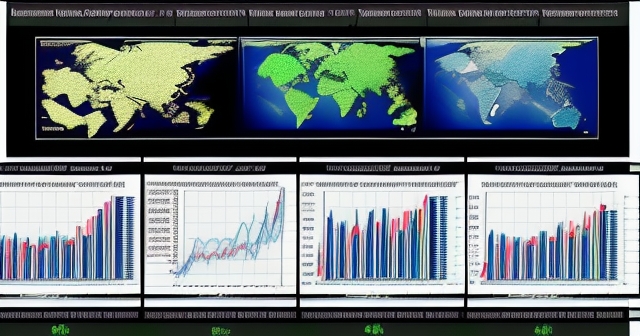
What is the most expensive stock in the world? Discover the Secrets Behind Berkshire Hathaway’s Incredible Share Price
When you first step into the fascinating world of stock markets, or even if you’ve been trading for a while, certain questions naturally arise. You might wonder, “Which stock has the highest price per share?” It’s a question that often sparks curiosity, hinting at perceived exclusivity or immense value. However, as we embark on this exploration together, you’ll quickly learn that while identifying the “most expensive stock” is straightforward, understanding what that price truly signifies is where the real wisdom lies.
In this article, we’re going to peel back the layers. We’ll identify the stock that consistently holds the title for the highest per-share price globally. More importantly, we will delve into the underlying reasons for such a high price and dissect the critical difference between a stock’s price and the company’s actual value, often represented by its market capitalization. This distinction is fundamental for any serious investor or trader.
Think of it like buying a car. One car might have a much higher price tag than another simply because it’s a limited edition with unique features, even if another model from the same manufacturer has a larger engine or is built on a more advanced platform. The price per unit is just one metric; the overall value and what you get for that price are much more important. Similarly, in stocks, the per-share price is just one number on the screen.
By the end of our journey, you’ll not only know the name of the world’s most expensive stock but, more significantly, you’ll possess a deeper understanding of how to evaluate a company’s worth beyond that single, potentially misleading, figure. We’ll discuss why some companies choose to keep their share prices extraordinarily high, explore other high-priced stocks across various sectors, and importantly, show you how you, as a retail investor, can gain exposure to these potentially high-value companies without needing a massive amount of capital for a single share.
Ready to move past the simple price tag and understand the true dynamics of stock valuation? Let’s begin.
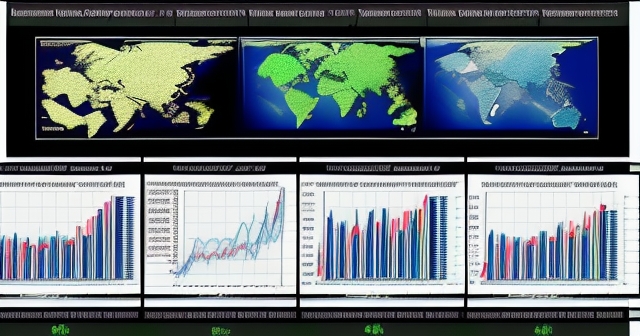
If you’ve done even a little searching about expensive stocks, you’ve likely already encountered the name. The stock that holds the crown for being the most expensive in the world, based purely on its price per individual share, is Berkshire Hathaway Inc.’s Class A shares, traded under the ticker symbol BRK.A.
Let’s talk numbers for a moment to grasp the scale. While stock prices fluctuate constantly based on market conditions, the price of a single BRK.A share typically resides in a realm far removed from most other publicly traded companies. We’re talking about prices that have recently been quoted anywhere from around $600,000 to well over $790,000 USD per share. Yes, that’s the price for *one* share!
To put this into perspective, consider that many well-known, blue-chip stocks trade for hundreds, sometimes thousands, of dollars per share. Even the stocks of tech giants that once reached high prices before splitting, like Amazon or Alphabet, were nowhere near this level on a per-share basis. BRK.A occupies a category of its own.
Why does this single share cost so much? Is it because Berkshire Hathaway is simply the most valuable company in the world? Not quite. While Berkshire Hathaway is undoubtedly one of the largest and most respected companies globally, its market capitalization (the total value of all its outstanding shares) is what reflects its overall worth, and while immense, it is surpassed by companies like Apple, Microsoft, Alphabet, or Amazon.
The extraordinary per-share price of BRK.A is primarily a result of a deliberate strategic decision made decades ago, one tied directly to the philosophy of its legendary leader, Warren Buffett, often referred to as the “Oracle of Omaha.” This strategy revolves around avoiding stock splits, a common corporate action many companies use to lower their per-share price.
So, while BRK.A is the answer to “what is the most expensive stock?”, its price is less about being the “most valuable” company and more about a unique approach to managing its share structure and attracting a specific type of investor. This brings us to another crucial point about Berkshire Hathaway – its dual share classes.
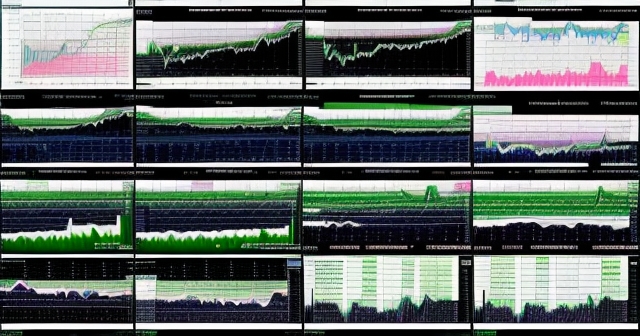
Recognizing that the stratospheric price of a single BRK.A share presented a significant barrier to entry for most individual investors, Berkshire Hathaway introduced a more accessible alternative: Class B shares, trading under the ticker symbol BRK.B.
This is where accessibility meets opportunity. BRK.B shares were created to allow a broader range of investors to own a piece of Berkshire Hathaway’s diverse portfolio and benefit from its performance. And the difference in price is staggering.
While a single BRK.A share can cost upwards of $700,000, a single BRK.B share typically trades for just a few hundred dollars, recently seen around the $400 mark. This makes ownership in Berkshire Hathaway’s empire, which includes iconic companies like GEICO, BNSF Railway, Dairy Queen, and significant stakes in Apple, Bank of America, and Coca-Cola, achievable for investors with more modest capital.
What’s the catch? The primary difference between Class A (BRK.A) and Class B (BRK.B) shares lies in their voting rights and their convertibility. A Class A share has significantly more voting power than a Class B share. Historically, a Class A share had the equivalent voting power of 1,500 Class B shares. This allows the original Class A shareholders, including Warren Buffett and his long-time partner Charlie Munger (before his passing), to maintain control over the company’s direction.
Additionally, Class A shares can be converted into Class B shares (typically at a 1:1,500 ratio, adjusted after a split), but Class B shares cannot be converted back into Class A shares. This one-way convertibility further underscores the control structure.
For the vast majority of retail investors interested in Berkshire Hathaway primarily for its investment portfolio and performance rather than corporate control, the difference in voting rights is largely irrelevant. The economic interest in the company’s earnings and assets is essentially the same on a proportional basis, making BRK.B shares a perfectly viable and much more affordable way to invest in this legendary company.
So, while BRK.A might grab headlines for its price, BRK.B is the practical gateway for most of us to invest alongside Warren Buffett.
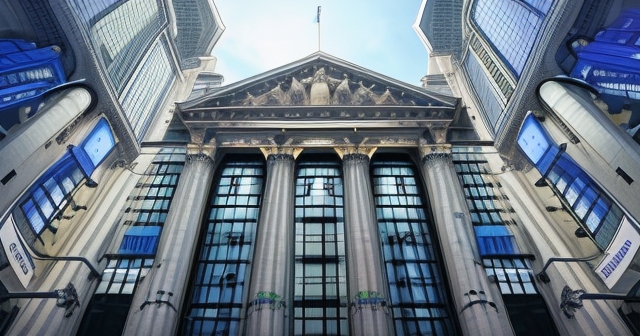
Now that we know BRK.A’s price is exceptionally high, not just because the company is valuable, but because of a specific choice, let’s explore the rationale behind Warren Buffett’s decision to avoid stock splits for the Class A shares.
Stock splits are a common corporate maneuver where a company increases its number of outstanding shares by a certain ratio (e.g., a 2-for-1 split doubles the shares, a 3-for-1 triples them). Each share’s price is then reduced proportionally. For example, if a stock trading at $1,000 undergoes a 10-for-1 split, each new share would trade around $100. This makes the stock more accessible to individual investors who might be hesitant or unable to buy a share at the higher price.
Why would Buffett deliberately choose *not* to do this for BRK.A for so long? His reasoning, articulated over the years, is rooted in a desire to cultivate a specific type of shareholder base – long-term, fundamentally-oriented investors.
Buffett believed that a very high share price would naturally deter speculative, short-term traders who might be more interested in quick gains from small price movements. Instead, it would attract investors who were serious about partnering with Berkshire Hathaway for the long haul, those who had done their homework and understood the company’s intrinsic value and business model.
He wanted shareholders who saw themselves as owners of the business, not just holders of a stock ticker. By keeping the price per share high, he effectively filtered for investors who were committed, patient, and aligned with Berkshire’s value-investing philosophy. This also reduced administrative costs associated with a larger number of smaller shareholders and perhaps discouraged trading based on trivial news or short-term market noise.
While the introduction of BRK.B in 1996 provided accessibility, the Class A shares remained untouched by splits, preserving this unique characteristic and signaling to the market that Berkshire’s core ownership was focused on stability and long-term growth, not short-term price fluctuations. This strategy reflects the Sage Archetype – prioritizing wisdom, knowledge, and a long-term perspective over immediate gratification.
Contrast this with companies like Amazon (AMZN) or Alphabet (GOOGL), whose share prices climbed significantly and who eventually performed stock splits to make their shares more accessible and potentially increase trading volume. Both approaches have merit depending on the company’s goals and shareholder base. Berkshire’s choice for BRK.A was distinctly about fostering a specific culture of long-term ownership.
Table of Contents
ToggleBeyond Omaha: Other Heavyweights in the High-Price Ring
While Berkshire Hathaway’s BRK.A is in a league of its own price-wise, it’s not the only company with a significantly high per-share price. Exploring these other companies provides further insight into diverse business models and strategies that can lead to high individual share costs, although none approach the magnitude of BRK.A.
Globally, one frequently mentioned name is Chocoladefabriken Lindt & Sprüngli AG, the Swiss chocolate maker, traded on the SIX Swiss Exchange (LISN.SW). Its registered shares can also command prices well into the tens of thousands of Swiss Francs (CHF), translating to a significant USD equivalent. Lindt’s high price is often attributed to a combination of limited share float, strong brand equity in the premium chocolate market, and consistent performance.
Within the U.S. market, beyond Berkshire, several companies stand out for their high share prices (again, distinct from market cap). These include:
- NVR Inc. (NVR): A homebuilding company operating under brands like Ryan Homes and NVHomes. NVR has a unique business model where it doesn’t acquire large land inventories upfront, which reduces capital requirements and risks. This efficient model, combined with a relatively lower number of outstanding shares compared to market value, results in a high share price, often trading over $7,000 per share.
- Booking Holdings (BKNG): The parent company of popular travel platforms like Booking.com, Priceline, and OpenTable. As a dominant player in the online travel agency space, Booking Holdings benefits from strong network effects and high margins, leading to a robust share price, frequently above $3,000.
- AutoZone Inc. (AZO): A leading retailer of automotive parts and accessories. AutoZone’s consistent performance, share buyback programs that reduce outstanding shares, and a resilient business model contribute to its high share price, often exceeding $2,800.
- Seaboard Corporation (SEB): A diverse agribusiness and transportation company. Seaboard is a holding company with interests ranging from pork production to shipping. Its shares trade infrequently and have a relatively low float, contributing to a high price, often around $3,500-$4,000.
- MercadoLibre (MELI): An e-commerce and fintech giant operating across Latin America. MercadoLibre’s rapid growth and dominance in a vast, expanding market have propelled its share price significantly, often trading well over $1,500-$2,000, though it has seen considerable volatility.
- White Mountains Insurance Group (WTM): A financial services company focusing on insurance. Like some other high-priced stocks, WTM has a relatively low number of shares outstanding and focuses on book value growth, leading to a high price per share, often above $1,800.
- Fair Isaac Corporation (FICO): Known for its credit scoring system. FICO’s dominant position in credit analytics and scoring provides it with strong recurring revenue and profitability, supporting a high share price, often over $1,300.
- First Citizens BancShares Inc. (FCNCA): A bank holding company that gained prominence after acquiring Silicon Valley Bank assets. Its share price surged significantly after this strategic move, often trading above $1,500.
Notice that while these prices are high compared to the average stock trading for tens or a few hundred dollars, they are still a fraction of BRK.A’s price. Each of these companies has specific reasons rooted in their business model, capital structure, or market position that contribute to their high per-share cost.
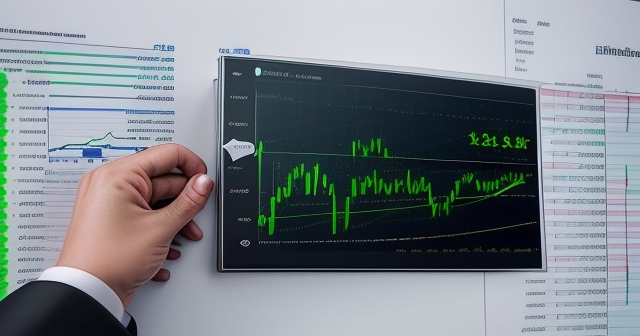
Looking at the list of high-priced stocks beyond Berkshire Hathaway, we see a variety of sectors represented: Homebuilding (NVR), Online Travel (Booking Holdings), Retail Trade (AutoZone), Agriculture/Transportation (Seaboard), E-commerce/Fintech (MercadoLibre), Insurance (White Mountains), Financial Analytics (FICO), Banking (First Citizens), and Consumer Durables (Lindt). Let’s briefly consider what factors within these sectors or business models can contribute to a high share price.
In Homebuilding (NVR), a model that avoids large land bank risks and focuses on efficiency can lead to higher profit margins relative to capital employed, which, if combined with share buybacks or a lower share count, pushes the price per share up.
Online Travel (Booking Holdings) and E-commerce/Fintech (MercadoLibre) benefit from strong network effects and dominant platform positions in growing digital markets. Their ability to generate significant revenue and profits with scalable technology platforms supports high valuations, which, if not offset by stock splits, results in high share prices.
Retail Trade (AutoZone) might achieve a high price through consistent, predictable earnings, effective inventory management, strong brand loyalty, and strategies like share repurchases that benefit existing shareholders and reduce share count.
Companies in Finance and Insurance (White Mountains, FICO, First Citizens) often have business models centered around managing assets, assessing risk, or providing essential financial infrastructure. Their value is tied to factors like book value growth, fee income, interest margins, or the irreplaceable nature of their data and systems (like FICO scores). A focus on retaining earnings and reinvesting rather than paying dividends, combined with a lower number of shares, can result in significant price appreciation per share.
Agribusiness and Transportation (Seaboard), while perhaps less glamorous, can have high share prices due to niche market dominance, vertical integration (like Seaboard’s farm-to-plate pork business), limited public float, and consistent, albeit potentially cyclical, earnings.
And for a company like Lindt in Consumer Durables (specifically premium chocolate), a strong global brand, perceived quality, pricing power, and potentially a closely held ownership structure limiting the public float can all contribute to a very high price per share.
What’s the common thread? It’s rarely *just* one thing. It’s often a combination of a successful business model, strong financial performance (earnings, profitability), efficient capital management (including how earnings are used – reinvested vs. paid out), strategies regarding share count (avoiding splits, buybacks), and sometimes, simply a limited supply of shares available for trading in the open market.
Understanding these sector-specific and company-specific drivers is far more valuable than just knowing the high price number itself.
This is perhaps the single most crucial concept to grasp when discussing stock prices, especially extremely high ones. A stock’s price per share does not equal the company’s total value.
Let’s use an analogy. Imagine you want to buy a pizza. One pizza place sells pizza by the slice, and a single slice costs $10. Another place sells whole pizzas, and a whole pizza costs $80. At first glance, the $10 slice seems cheaper. But if the whole pizza is cut into 10 slices, each slice is equivalent to $8. Buying the whole pizza is actually cheaper per slice than buying a single slice from the first place.
In this analogy:
- The price of a single slice/pizza is like the stock price per share.
- The total cost of the entire pizza is like the company’s market capitalization.
Market capitalization (or “market cap”) is calculated by multiplying the current stock price per share by the total number of outstanding shares (the shares held by all shareholders). The formula is simple:
Market Capitalization = Stock Price per Share × Number of Outstanding Shares
This figure represents the total market value of the company’s equity. It’s what it would theoretically cost to buy every single share of the company on the open market. Market cap is the widely accepted metric for determining a company’s size and overall market value, not the price of a single share.
Let’s go back to Berkshire Hathaway. BRK.A shares are extremely expensive per share. But there are far fewer BRK.A shares outstanding compared to BRK.B shares. When you add the total value of all BRK.A shares to the total value of all BRK.B shares, you get Berkshire Hathaway’s total market capitalization. This figure will place Berkshire Hathaway among the largest companies in the world by value, but typically below companies like Apple, Microsoft, and Saudi Aramco, which have much larger market caps despite having significantly lower share prices.
Companies like Apple or Microsoft have billions of shares outstanding, trading at prices typically between $150 and $500. Their market cap is calculated by multiplying that price by the billions of shares. Berkshire Hathaway, with fewer Class A shares (though a large number of Class B shares), reaches its market cap differently.
Therefore, judging a company’s size, success, or intrinsic value purely by its stock price per share is misleading. A stock trading at $10 with a billion shares outstanding ($10 billion market cap) is a much larger company than a stock trading at $1,000 with only a million shares outstanding ($1 billion market cap).
Always look at market capitalization to understand the company’s scale, not just the per-share price. This is a fundamental lesson for any investor moving beyond simply watching stock quotes.
| Valuation Metrics | Description |
|---|---|
| Price-to-Earnings Ratio (P/E) | Compares stock price to earnings per share. |
| Price/Earnings to Growth Ratio (PEG) | Considers P/E ratio and expected earnings growth. |
| Enterprise Value/EBITDA | Useful for comparing companies with different debt levels. |
| Earnings Per Share (EPS) | Net income divided by outstanding shares. |
| Price-to-Book Ratio (P/B) | Compares stock price to book value per share. |
Okay, we’ve established that stock price isn’t the full story, and market capitalization gives us a better sense of size. But how do we truly assess if a company is a good investment, regardless of whether its shares are expensive or cheap on a per-share basis?
This is where fundamental analysis comes in, utilizing various financial metrics that provide insight into a company’s health, profitability, growth prospects, and how its current market value relates to its earnings, assets, or sales. Ignoring these and focusing only on price is like buying a house based only on the price per square foot without considering its location, condition, or overall size.
Using these metrics, along with others like dividend yield, revenue growth, profit margins, debt levels, and cash flow, gives you a much more complete picture of a company’s financial health and valuation than simply looking at its stock price. An expensive stock might be undervalued based on its P/E or PEG ratio if its earnings are exceptionally high or growing rapidly. Conversely, a seemingly cheap stock could be overvalued if its fundamentals are weak.
For serious traders and investors, mastering the use of these metrics is essential for making informed decisions.
This is the critical question, isn’t it? Knowing that BRK.A trades for over $700,000, does that make it a good investment? The short answer is: not necessarily, just because of its price.
Whether any stock, regardless of its price tag, is a good investment depends entirely on its intrinsic value relative to its market price. Value investors, like Warren Buffett himself, seek to buy stocks when their market price is significantly below their estimated intrinsic value. Intrinsic value is an estimate of a company’s true worth based on a thorough analysis of its fundamentals, future earning potential, assets, liabilities, and competitive advantages.
A stock with a high price per share could be undervalued, fairly valued, or overvalued when assessed using fundamental analysis and considering its future prospects. Similarly, a stock with a low price per share could also fall into any of these categories.
Consider Berkshire Hathaway (BRK.A or BRK.B). Its high price reflects its historical performance, the value of its underlying businesses (from insurance to energy to manufacturing), its significant investment portfolio (stocks like Apple, Bank of America, Coca-Cola), and the market’s confidence in its management, particularly Warren Buffett and his team. Is it a good buy *today*? That requires analyzing Berkshire’s current market cap, its earnings, book value, future growth prospects across its diverse holdings, and comparing that to alternative investment opportunities.
Similarly, a company like NVR Inc. (NVR) with a high price per share might be considered a good investment if its unique business model allows it to generate strong, consistent profits and its share price, though high, represents a reasonable multiple of those earnings (i.e., a fair P/E or EV/EBITDA ratio compared to its growth and industry). Conversely, if NVR’s price were to skyrocket purely on speculation without a corresponding increase in its underlying business value, it could become overvalued.
The price you pay determines your return. Buying a fantastic company at an exorbitant price can lead to poor returns, just as buying a struggling company at a rock-bottom price can be a value trap. Your focus should be on identifying companies with strong fundamentals, growth potential, and competitive advantages, and then determining if the current market price offers an attractive entry point based on a careful valuation using the metrics we discussed (P/E, PEG, etc.) and qualitative analysis of the business itself.
Don’t let a high price scare you away from potentially good companies, but also don’t assume a high price automatically means high quality or future returns. Always do your homework and understand the value behind the price tag.
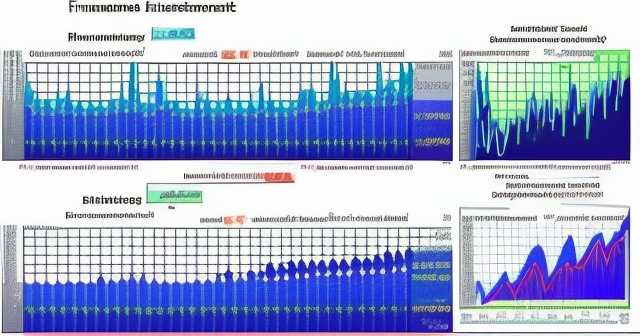
Okay, so you understand that a high stock price doesn’t tell the whole story, and you’re interested in investing in high-quality companies, which might include some with expensive shares like Berkshire Hathaway (BRK.A) or Booking Holdings (BKNG). But you might not have hundreds of thousands or even thousands of dollars to buy a single share. Does this mean these companies are off-limits to you?
Absolutely not! The financial markets have evolved, providing several pathways for retail investors like you to gain exposure to companies with high individual share prices:
- Buying Class B Shares (BRK.B): As we discussed, Berkshire Hathaway’s Class B shares (BRK.B) were specifically created to be accessible. Trading at a fraction of the price of Class A shares, BRK.B allows you to own a piece of Berkshire’s empire and participate in its performance without the immense capital required for BRK.A.
- Fractional Shares: Many brokerage platforms now offer the ability to buy fractional shares. This means you can invest a specific dollar amount (e.g., $100 or $500) into a stock, and you’ll own a fraction of a share corresponding to that amount. If a stock costs $1,000 per share and you invest $100, you’ll own 0.1 shares. This is a game-changer for accessing expensive stocks like Booking Holdings or NVR. You can start building a position in these companies with a much smaller investment.
- Exchange-Traded Funds (ETFs): ETFs are funds that hold a basket of securities, often tracking an index (like the S&P 500), a sector, or a specific investment strategy. Many ETFs hold positions in highly valued companies, including those with high individual share prices. By investing in an ETF that includes these companies among its holdings, you gain diversified exposure to them along with many others, typically for a much lower price per ETF share than the cost of a single share of their most expensive holdings.
- Mutual Funds: Similar to ETFs, mutual funds pool money from many investors to buy a portfolio of stocks, bonds, or other securities. Professionally managed mutual funds often include positions in leading companies, regardless of their individual share prices. Investing in a mutual fund focused on large-cap stocks or value investing, for instance, could give you indirect ownership in companies like Berkshire Hathaway or Booking Holdings.
- Options Trading (Advanced): For more experienced traders, options contracts provide another way to gain leveraged exposure. An options contract gives the holder the right, but not the obligation, to buy or sell an underlying asset (like a stock) at a specific price within a certain timeframe. Options contracts typically represent 100 shares of the underlying stock, and the premium (cost) for the option is usually much less than buying 100 shares outright. However, options trading involves significant risk and is not suitable for beginners.
These options demonstrate that a high per-share price is no longer an insurmountable barrier for portfolio construction. You have tools available to invest in fundamentally sound companies, regardless of the nominal cost of one share. The key is to choose the method that aligns with your capital, risk tolerance, and investment goals.
While a high stock price doesn’t automatically mean overvaluation, there are situations where a rapidly inflating price, especially one not supported by underlying fundamentals, can be a warning sign. Understanding these scenarios is crucial for protecting your capital.
What might signal caution when a stock price is soaring?
- Price Disconnect from Fundamentals: If a company’s stock price is increasing dramatically, but its earnings, revenue, profitability, and growth prospects aren’t improving commensurately, the high price might be driven more by speculative hype or irrational exuberance than by genuine value creation. Look at the P/E, PEG, and other valuation ratios. Are they reaching historical extremes or significantly outpacing industry averages without clear justification from the business?
- Speculative Bubbles: Sometimes, certain stocks or sectors become targets of intense speculation, pushing prices to unsustainable levels. This can happen with exciting new technologies or companies generating significant buzz but limited actual profits. Think back to the dot-com bubble or recent examples where stocks like Peloton (PTON) or Zoom (ZM) saw massive price surges during specific market conditions, which later corrected sharply when fundamentals didn’t keep pace with expectations.
- Low Float and Manipulation Risk: While a low number of outstanding shares can contribute to a naturally high price for a stable company (like Seaboard), it can also make a stock more susceptible to price manipulation or extreme volatility if a large buyer or seller enters the market. Be aware of stocks with very thin trading volumes and low public floats.
- Reliance on Future, Unproven Growth: Some high-priced stocks are valued based heavily on projected future growth that is not yet guaranteed. If the company fails to meet these high expectations, the stock price can tumble rapidly. This is why understanding the PEG ratio and assessing the *sustainability* of the growth rate is critical.
A high stock price resulting from consistent, fundamental business improvement (like increased earnings, expanded market share, or successful new products) is generally healthy. A high price driven purely by popularity, hype, or unrealistic future projections, on the other hand, can be a signal of potential overvaluation and increased risk. Always investigate *why* the price is high.
This requires you to move beyond simply observing price movements and commit to understanding the underlying business and its financial health. This is the essence of informed investing.
We began by asking about the world’s most expensive stock and discovered that Berkshire Hathaway’s Class A shares (BRK.A) hold that title by a significant margin, thanks largely to Warren Buffett’s strategy of avoiding stock splits to attract long-term investors. We also saw that the more accessible Class B shares (BRK.B) offer a practical entry point for most retail investors.
Crucially, we reinforced the fundamental principle that a stock’s price per share is not synonymous with the company’s overall value. Market capitalization is the proper metric for gauging a company’s size and worth in the market.
Our exploration of other high-priced stocks revealed that various factors, unique business models, limited share counts, and strong sector positions can lead to high individual share costs, although none come close to BRK.A. We also delved into why understanding these factors is more important than the price itself.
Perhaps most importantly for your journey as an investor or trader, we highlighted the necessity of looking beyond the price tag. Evaluating a stock requires delving into fundamental analysis using metrics like the P/E ratio, PEG ratio, EV/EBITDA, and EPS to assess the company’s health, profitability, and valuation relative to its peers and historical performance.
And remember, a high price per share is not an insurmountable barrier to investing in quality companies. Tools like fractional shares, ETFs, mutual funds, and BRK.B provide accessible pathways to own a piece of these businesses.
Investing successfully is not about chasing the highest-priced stock or avoiding seemingly cheap ones. It’s about understanding what you are buying – the underlying business – and assessing its value relative to its price. By focusing on fundamental analysis and utilizing the accessible investment methods available today, you can build a diversified portfolio of high-quality companies, regardless of whether their individual shares trade for hundreds, thousands, or hundreds of thousands of dollars.
Empower yourself with knowledge, understand the true meaning of value, and you’ll be well-equipped to navigate the complexities of the stock market and work towards your financial goals.
Keep learning, keep analyzing, and invest wisely.
what is the most expensive stock in the worldFAQ
Q:What stock has the highest price per share?
A:Berkshire Hathaway Class A shares (BRK.A) hold the title for the highest price per share.
Q:Why doesn’t Berkshire Hathaway split its stock?
A:Warren Buffett believes that keeping the share price high attracts long-term, committed investors rather than short-term traders.
Q:How can I invest in high-priced stocks if I have limited capital?
A:You can invest in fractional shares, Class B shares, or through ETFs and mutual funds that include high-valued companies in their portfolios.
You may also like
Calendar
| 一 | 二 | 三 | 四 | 五 | 六 | 日 |
|---|---|---|---|---|---|---|
| 1 | 2 | 3 | 4 | 5 | 6 | 7 |
| 8 | 9 | 10 | 11 | 12 | 13 | 14 |
| 15 | 16 | 17 | 18 | 19 | 20 | 21 |
| 22 | 23 | 24 | 25 | 26 | 27 | 28 |
| 29 | 30 | 31 | ||||
發佈留言
很抱歉,必須登入網站才能發佈留言。